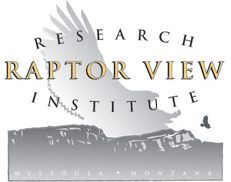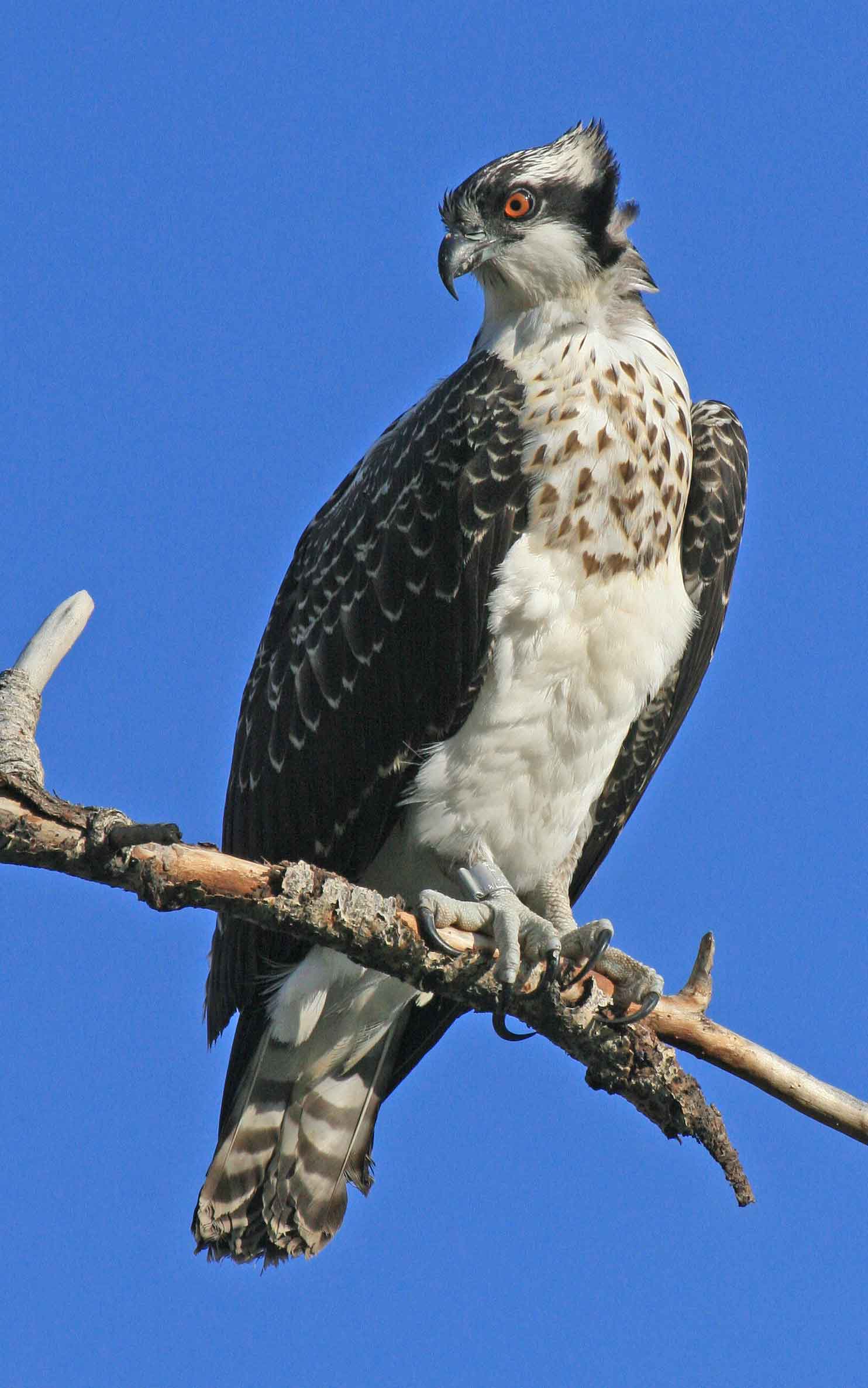To date, we have accessed about 40 nests, drawn blood samples (for heavy metal analysis) and banded 330 nestlings. This makes our Osprey
project one of the largest and most comprehensive of its kind. Results are troubling, with many nestlings showing mercury levels 100 times higher than what would be considered toxic in humans.
We are proud to be partnering with several local experts, Uni- versity of Montana researchers Dr. Heiko Langner and Dr. John- ny Moore (Environmental Biogeochemistry Lab) and Dr. Erick Greene (Division of Biological Sciences and Wildlife Biology), to closely examine the causes, locations and possible ef- fects of mining-related and possibly atmospheric contaminants on Ospreys and the ecosystems that support them.
To learn more about this toxicology project, please see our resent publication in the Archives of Environ- mental Contamination and Toxicology. The paper is titled: Mercury and Other Mining-Re- lated Contaminants in Ospreys along the Upper Clark Fork River.
Color Banding
In 2010 we began color banding Osprey (blue with white numbers), as this greatly enhanc- es our chances of identifying individual from a distance. Specifically identifying individuals wearing only a metal USGS band almost always means they must be recaptured or found as mortalities. In total, we have color banded 180 individual Osprey and the encounters are starting to come in. This year a chick banded in 2012 was seen as a healthy adult all the way in Honduras!
Baling Twine
Ospreys have the bad habit of collecting baling twine to adorn their nests. Unfortunately, baling twine is a serious threat to Osprey, as they often get tangled in this durable polypropylene rope. We have found baling twine in nearly every nest located in our study area. For example, one Osprey nest that blew down in Missoula contained more than a quarter of a mile of baling twine!
Every summer we get calls about Osprey tangled in baling twine. We always drop whatever we are doing to see if we can rescue these tangled birds. It is important to get to the Osprey quickly, before it suffers irreparable damage by way of amputation, heat stress, broken bones and so on. Unlike many other human-caused environmental problems facing wildlife, this is a simple one, with an easy fix. We ask landowners and stewards to please clear their fields and property of the deadly twine. By simply picking up the loose strands and properly disposing of the material, we can save untold numbers of Osprey.
Learn more about the Osprey Bailing Twine Project
To help spread the word, Erick and Anne Greene put together an informative pamphlet addressing this is issue.
Learn more about Osprey and bailing twine in our Osprey Pamphlet (PDF, 380kb)
For more information or for copies of this Osprey and Baling Twine pamphlet contact This email address is being protected from spambots. You need JavaScript enabled to view it..












